Potrebujeme váš súhlas na využitie jednotlivých dát, aby sa vám okrem iného mohli ukazovať informácie týkajúce sa vašich záujmov. Súhlas udelíte kliknutím na tlačidlo „OK“.
ASTM D5313/D5313M-12(2013)
Standard Test Method for Evaluation of Durability of Rock for Erosion Control Under Wetting and Drying Conditions
Automaticky preložený názov:
Štandardná skúšobná metóda pre hodnotenie trvanlivosti Rock for Protierózne Under zvlhčovanie a sušenie podmienky
NORMA vydaná dňa 15.1.2013
Informácie o norme:
Označenie normy: ASTM D5313/D5313M-12(2013)
Poznámka: NEPLATNÁ
Dátum vydania normy: 15.1.2013
Kód tovaru: NS-30701
Počet strán: 6
Približná hmotnosť: 18 g (0.04 libier)
Krajina: Americká technická norma
Kategória: Technické normy ASTM
Kategórie - podobné normy:
Zemní práce. Hloubicí práce. Budování základů. Podzemní práce
Anotácia textu normy ASTM D5313/D5313M-12(2013) :
Keywords:
armor stone, breakwater stone, climatic setting, erosion control, gabion-fill, laboratory testing, riprap, rock, rock material properties, wetting-drying, ICS Number Code 93.020 (Earth works. Excavations. Foundation construction. Underground works)
Doplňujúce informácie
| Significance and Use | ||||||||||||||
|
5.1 Rock for erosion control consists of individual pieces of natural stone. The ability of these individual pieces of stone to resist deterioration due to weathering action affects the stability of the integral placement of rock for erosion control and hence, the stability of construction projects, structures, shorelines, and stream banks. 5.2 This test method is designed to determine the effects of wetting and drying action on the individual pieces of rock for erosion control and the resistance of the rock to deterioration. This test method was developed to be used in conjunction with additional test methods listed in Practice D4992. This test method does not provide an absolute value but rather an indication of the resistance to wetting and drying; therefore, the results of this test method are not to be used as the sole basis for the determination of rock durability. 1.1 This test method covers
procedures for evaluating the durability of rock for erosion
control when exposed to wetting and drying conditions on slabs of
rock. This weathering test exposes the rock to wetting and drying
cycles similar to fluctuating water levels and weather conditions.
The rock slabs, prepared in accordance with procedures in Practice
D5121, are intended to be representative of erosion control rock
and its weaknesses. The test is appropriate for breakwater stone,
armor stone, riprap and gabion sized rock materials.
The limitations of the test are twofold. First, the size of the cut rock slab specimens may eliminate some of the internal defects present in the rock structure. The test specimens may not be representative of the quality of the larger rock samples used in construction. Careful examination of the rock source and proper sampling are essential in minimizing this limitation. Secondly, the test requires the rock slabs to be exposed to 80 wetting-drying cycles. The test is time intensive and will require approximately three months to complete the sample preparation, testing, and analysis portions of the procedure. 1.2 The use of reclaimed concrete and other materials is beyond the scope of this test method. 1.3 Units—The values stated in either SI units or inch-pound units [presented in brackets] are to be regarded separately as standard. The values stated in each system may not be exact equivalents; therefore, each system shall be used independently of the other. Combining values from the two systems may result in non-conformance with the standard. 1.4 All observed and calculated values shall conform to the guidelines for significant digits and rounding established in Practice D6026, unless superseded by this standard. 1.4.1 For purposes of comparing measured or calculated value(s) with specified limits, the measured or calculated value(s) shall be rounded to the nearest decimal or significant digits in the specified limits. 1.4.2 The procedures used to specify how data are collected/recorded or calculated in this standard are regarded as the industry standard. In addition, they are representative of the significant digits that generally should be retained. The procedures used do not consider material variation, purpose for obtaining the data, special purpose studies, or any considerations for the user’s objectives; and it is common practice to increase or reduce significant digits of reported data to be commensurate with these considerations. It is beyond the scope of this standard to consider significant digits used in analytical methods for engineering design. 1.5 This standard does not purport to address all of the safety concerns, if any, associated with its use. It is the responsibility of the user of this standard to establish appropriate safety and health practices and determine the applicability of regulatory limitations prior to use. |
||||||||||||||
| 2. Referenced Documents | ||||||||||||||
|
Podobné normy:
Historická
1.7.2006
Historická
1.6.2014
Historická
1.4.2012
Historická
1.1.2011
Historická
1.1.2008
Historická
1.5.2010
Odporúčame:
Aktualizácia technických noriem
Chcete mať istotu, že používate len platné technické normy?
Ponúkame Vám riešenie, ktoré Vám zaistí mesačný prehľad o aktuálnosti noriem, ktoré používate.
Chcete vedieť viac informácií ? Pozrite sa na túto stránku.



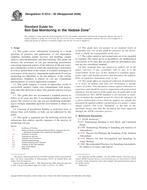 ASTM D5314-92(2006)..
ASTM D5314-92(2006).. ASTM D5335-14
ASTM D5335-14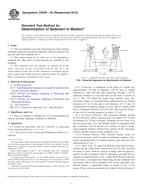 ASTM D5439-95(2012)..
ASTM D5439-95(2012)..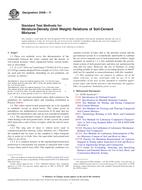 ASTM D558-11
ASTM D558-11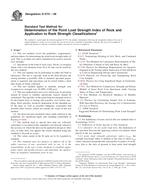 ASTM D5731-08
ASTM D5731-08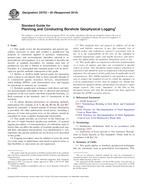 ASTM D5753-05(2010)..
ASTM D5753-05(2010)..
 Cookies
Cookies
